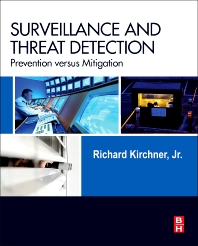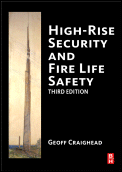
Fire protection systems can be complex, particularly when a system is installed in what is considered a “hazardous” environment, such as an offshore oil rig, a refrigeration plant that uses ammonia in its coolants or a manufacturing facility that uses chemical solvents to make plastic or for printing. It’s critical that the fire detection equipment used in such installations will not increase the fire hazard.
Security professionals that design and install fire protection systems know that requirements vary considerably from state to state and even from one municipality to another, depending on which version of the National Fire Protection Agency code is in effect. Determining the requirements for fire systems for use in hazardous areas is even more challenging because different types of hazardous areas have different fire protection requirements. Depending on the environment, an installation may have to meet requirements from organizations as diverse as the Occupational Safety and Health Administration, the International Code Committee or the Compressed Gas Association, security industry sources say. Those sources also note that there is not even a single widely recognized definition of the term “hazardous.”
No Boiler Plate Solutions
As Patrick Hogan, vice president of marketing for Lincolnshire, Ill.-based Honeywell Analytics explains, fire systems for hazardous areas typically are designed by an engineer who specializes in those systems, often for a particular industry. “The engineers responsible for the design use best practices,” Hogan explains. “They create these based on an amalgam of national codes with their own standards. Bid specifications are very much best of breed. In heavy industrial operations, there’s not a lot of boiler-plated solutions.”
Planning a fire system for a hazardous area is likely to involve a range of processes, including risk assessment and mitigation. Engineers do a lot of modeling as well as engineering studies, explains Hogan. “They build a risk assessment model and create a mitigation or shut-down philosophy based on the likelihood of all of those things happening simultaneously,” he says.
Corporations develop their own minimum standards based on this kind of data, Hogan explains. “What is the acceptable level of risk, the frequency of an event, and how likely is it to go undetected. That combination gives them a math equation.”
Using this information, Hogan describes, “They may add more sensors and checks and balances in their systems: Before we turn this on, we must turn that on. That makes it unlikely we will open a valve without venting. They create very complex business models.”
Such tightly designed systems can cost tens of millions of dollars for a large installation such as a refinery if both fire and gas detection are involved, Hogan says. “The cost is offset with the value of the refinery, the loss of production and the damage to its reputation.”
But although specialty engineers are the key decision-makers about which equipment to use and how to install it, they do take advice from systems integrators that specialize in hazardous installations and from manufacturers that supply those integrators. “In many cases the bigger integrators have had a chance to influence the design philosophy,” Hogan relates. In addition, he says, companies such as Honeywell Analytics that manufacture equipment for use in hazardous areas may be asked to provide white papers and other information about new developments in this area.
The design engineer sometimes hires an engineering, procuring and contracting company which in turn hires the systems integrator for the job, usually based on a request for quotation (RFQ) process, Hogan says. The work typically goes to integrators that have demonstrated expertise in installations for hazardous areas.
“If you’re doing residential fire and burglary systems, you won’t want to jump right into hazardous facilities,” comments Jay Levy, western regional sales manager for Buena Park, Calif.-based Hochiki America Corp., a fire equipment manufacturer. Anyone wanting to specialize in fire systems for hazardous areas should consider getting a degree in fire protection engineering as a starting point, Levy advises.
Intrinsically Safe Devices
Despite the diversity in fire systems for hazardous areas, there is one requirement that many such systems have in common, a requirement that equipment used in the immediate vicinity of the hazard should be designated “intrinsically safe.”
A good definition of this term can be found in the National Electrical Code (NFPA70), explains Tim Frankenburg, fire products manager for St. Louis-based manufacturer Potter Electric Signal. According to that definition, an intrinsically safe device is one that is incapable of causing an ignition if it is hit by a spark or thermal event.
Frankenburg notes, for example, that some gases used in a hospital are potentially hazardous, but intrinsically safe devices are only required in areas where tanks containing those gases are stored.
Intrinsically safe smoke detectors typically are sealed against the environment, and as John Haynes, director of fire alarm marketing for Westminster, Mass.-based SimplexGrinnel notes, that requires a whole different approach to smoke detection from what is used in conventional installations.
“Conventional smokes need to have access to the air to pick up smoke particles,” Haynes explains. Intrinsically safe detectors, he says, are more likely to use optical technology for smoke detection. An optical device detects smoke by sensing infrared and ultraviolet radiation through a sealed glass.
Two organizations, Underwriters Laboratories and Factory Mutual, are responsible for certifying that specific devices meet requirements to be considered intrinsically safe, Levy says.
Technology Trends
As alarm equipment in general becomes more intelligent, it is driving important trends throughout the alarm industry, and fire detection for hazardous areas is no exception.
Hogan notes, for example, that fire and gas detection systems today are more likely than in the past to be installed by the same contractor. “What we’re finding is that more and more people are asking us to supply integrated fire and gas systems, and a number of companies can bid on the whole thing,” he relates. Such systems also may integrate video and access control, Hogan says.
More intelligence also is giving rise to new types of detectors. For example, Northford, Conn.-based Honeywell Fire Systems offers an intrinsically safe detector that can detect various gases, such as methane and chlorine, and can be set to different thresholds depending on the requirements of an individual installation. As David Tamulevich, Notifier Network product manager for Honeywell Fire Systems explains, the product also can detect when oxygen is being depleted, an early warning sign of a fire.
Standards Bodies
Never was the saying, “The customer knows best,” truer than in the area of fire systems for hazardous areas. For example, no one is likely to be more familiar with the hazards and requirements of the chemical industry than a chemical company. Consulting with customers about the requirements of their industry is critical to devising the optimum fire system to meet their needs.
Here are just a few of the organizations with which you may need to consult:
• Compressed Gas Association (CGA); www.cganet.com
• Factory Mutual; www.fmapprovals.com
• International Code Council (ICC); www.iccsafe.org
• National Electrical Manufacturers Association (NEMA);
www.nema.org
• National Fire Protection Association (NFPA); www.nfpa.org
• Occupational Safety and Health Administration (OSHA);
www.osha.gov
• Underwriters Laboratories; www.ul.com




